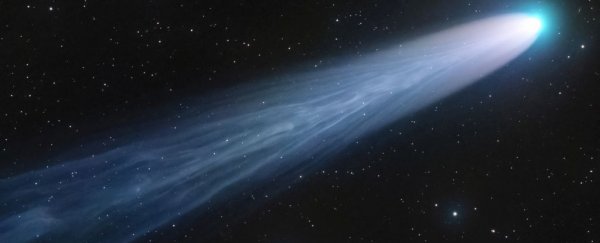There's a big, wide, wonderful, breathtaking Universe out there, beyond the bubble of life on Earth – although not much of it is visible to most of us, here on this pale blue dot. We look up; we may see stars, and galaxies, and the disk of the Milky Way, as specks and smears of light.
To see deeper, and clearer, requires the use of tools, and people able to use them – like the amazing astrophotographers now shortlisted for the Astronomy Photographer of the Year competition run by the Royal Observatory Greenwich in the UK.
This year saw the submission of over 3,000 entries from 67 countries around the world, to be awarded prizes in nine categories in addition to two special prizes, and the grand prize to be awarded to the photographer judged best overall.
The shortlisted photographs range from near to far: to images of Spaceship Earth, against its shimmering backdrop of stars; to the Solar System; to more distant nebulae, and galaxies colliding by way of an intricate dance beyond the confines of the Milky Way.
These winners won't be announced until September 15, but the announcement of the shortlist means that you can enjoy the submissions now. As the great science communicator and astronomer Carl Sagan once wrote, "The cosmos is within us. We are made of star-stuff. We are a way for the Universe to know itself."
Or, if you prefer Oscar Wilde: "We are all in the gutter, but some of us are looking at the stars."
Here's a selection of some of our favorites.
Circles and Curves by Sean Goebel
 (Sean Goebel)
(Sean Goebel)
Taken in the California desert in a natural stone formation, this image shows a timelapse of the stars forming arcs in the sky as Earth rotates.
At the center is Polaris, the North Star, which due to its position almost directly over the North Pole appears to remain still in the sky. It shines over the Sierra Nevada mountain range, including Mount Whitney on the left – the tallest mountain on the US continent.
Suburbs of Carina Nebula by Ignacio Diaz Bobillo
 (Ignacio Diaz Bobillo)
(Ignacio Diaz Bobillo)
The Carina Nebula, located roughly 8,500 light-years away, is one of the biggest and most beautiful cosmic clouds we can see in our sky. This small (well, relative to the entire nebula complex) section is known as RCW 53c, and it's rarely photographed in isolation.
This image, taken from Argentina, uses two colors to map the hydrogen and oxygen in the gas that makes up the cloud.
An Icelandic Saga by Carl Gallagher
 (Carl Gallagher)
(Carl Gallagher)
This image, a single exposure, shows the aurora borealis shining through a gap in the clouds over the wreck of the once-whaling ship Gardur on the coast of Iceland.
The aurora dancing across the sky is the result of solar particles colliding with and ionizing particles in Earth's atmosphere – very similar to the process of ionization from stellar radiation that makes clouds like RCW 53c glow.
Comet C/2021 A1 (Leonard) by Lionel Majzik
 (Lionel Majzik)
(Lionel Majzik)
Comet Leonard was discovered in the sky in January of last year, and grew so bright in December that it was visible, for a time, with the naked eye. This image, revealing the complex structures in Leonard's gorgeous tail, was captured at the end of December. The green glow is produced by cyanide or cyanogen in the comet's atmosphere excited by ultraviolet radiation from the Sun.
Comet Leonard, alas, won't be back: it broke apart and disintegrated as it went around the Sun.
The starry sky over the world's highest national highway by Yang Sutie
 (Yang Sutie)
(Yang Sutie)
National Highway 219 in Tibet is the highest national highway in the world. In this 245-second exposure, the highway glows in the foreground with the light of cars speeding around its snaking bends, the serene array of stars in the disk of the Milky Way shining overhead imaged using a separate instrument.
On the horizon, Mount Kula Kangri on the Tibet-Bhutan border, is illuminated by the glow of the Moon just set to the west.
You can view more of these images on the Royal Museums Greenwich website. The winners will be announced on 15 September 2022.
